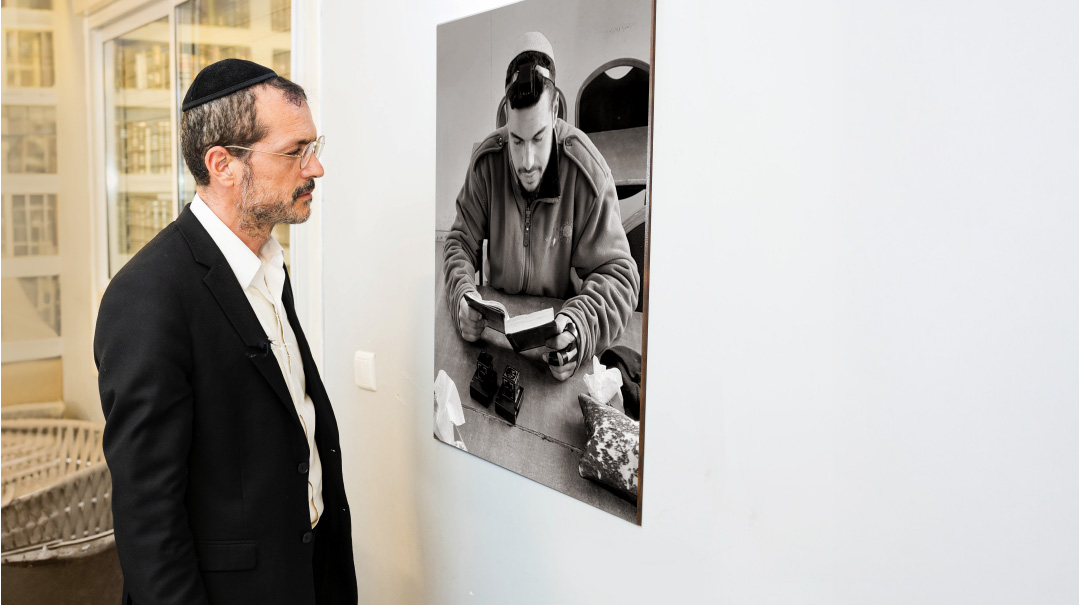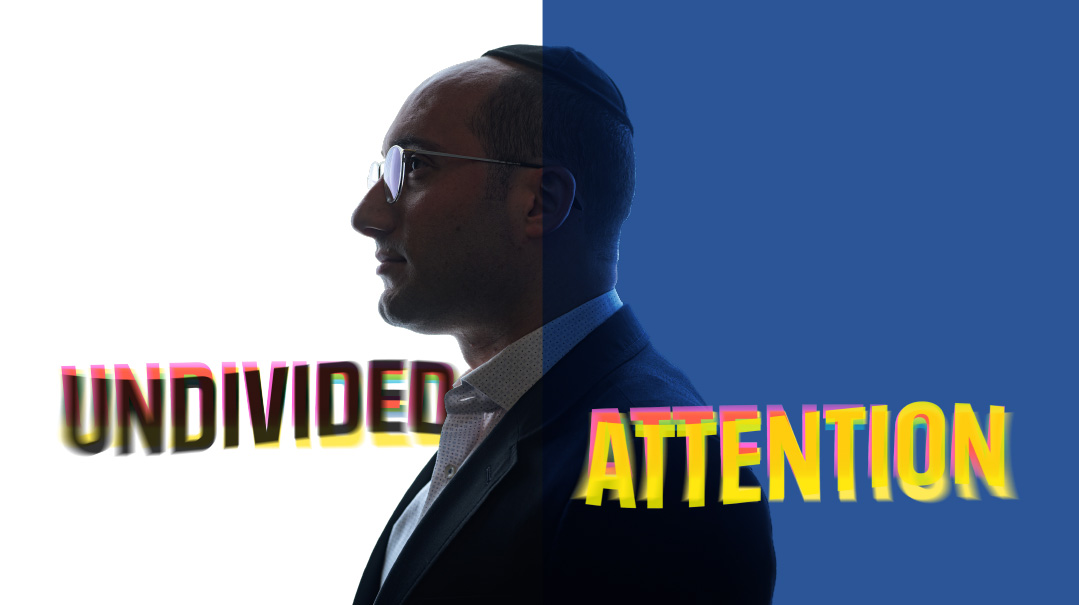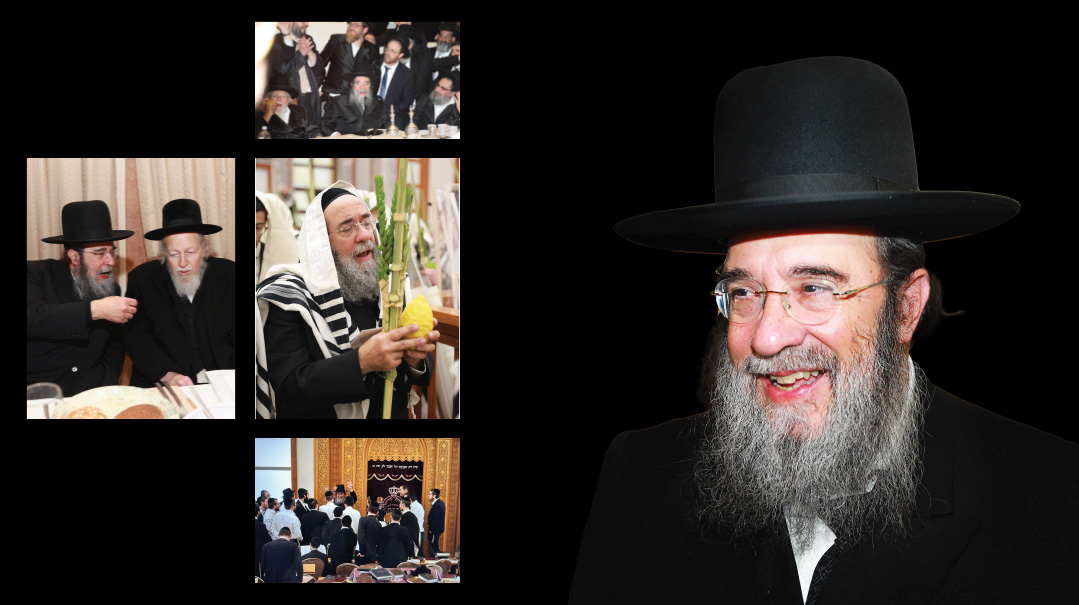Sharing the Wealth
| October 26, 2021What communal nonprofits can learn from the corporate world

There’s been a lot of buzz about bringing corporate practices into our communal nonprofits. Large nonprofits like the UJA-Federation of New York, the Orthodox Union, and the ADL have pulled senior corporate executives or lawyers to serve in the number one slot. Both Eric Goldstein, CEO of the UJA, and Allen Fagin, retired executive vice president of the OU, were senior partners at world class law firms. Jonathan Greenblatt, CEO of ADL, was an entrepreneur and corporate executive at Starbucks who holds an MBA from the prestigious Kellogg School of Management in Illinois.
Kiruv organization Olami has given senior leadership roles to Charlie Harary, a lawyer, investor, and strategic advisor, and Benjy White, a former CapGemini consultant and corporate COO. Even nonprofits that have not entrusted the CEO position to business executives are being pushed by board members with business backgrounds to utilize corporate best practices in management, transparency, and efficiency.
Our panelists
Allen Fagin
is the executive vice president emeritus and former chief professional officer of the Orthodox Union. In 2013, Mr. Fagin retired from leading international law firm Proskauer Rose LLP, where he specialized in employment law. He served as Proskauer’s chairman from 2005 to 2011. In April 2014, he took the helm of the Orthodox Union as the executive vice president and chief professional officer and was responsible for the vision, design, and implementation of new departments and programming; the strategic growth and expansion of existing departments; and the leadership and mentorship of hundreds of employees.
Michael Bloch
has been a consultant with global management consulting company McKinsey for 23 years, 17 of them as a partner or senior partner. He advised the senior leadership of global enterprises on technology, innovation, business operation, and strategy. In early 2021, Michael left McKinsey to focus full-time on the social sector. He founded Israel Impact Partners to help philanthropic individuals and foundations accelerate the growth of the nonprofit organizations they support.
Aryeh Goldberg
is the executive vice president of commercial operations at Bruin Biometrics LLC. He serves on the board of several important institutions and is the chairman of the Dean’s Advisory Council for the Center for the Jewish Future at Yeshiva University. He is a co-chairman on the Anwar Sadat Congressional Gold Medal Commission in commemoration of the 40 years of peace between Israel and Egypt, and he and his wife have been active members of AIPAC’s New Leadership Network since 2013.
Let’s Break It Down — The Importance of Research
It seems that every online fundraising campaign, annual dinner, capital campaign, and social media post has an accompanying video that’s designed to speak straight to the heart. The video may feature a young bald child hugging his camp counselor, a tearful couple describing the turmoil of attending a sibling’s bris so many years into their own childless marriage, or a poverty-stricken Holocaust survivor hugging the delivery man schlepping in boxes of basic Pesach necessities. Clearly the organization is doing amazing work — just look at the evidence! And when the video tugs at your heartstrings, you’re convinced, and you loosen your purse strings.
Good marketing is convincing (just look at how much the Super Bowl commercial slots cost), and well-produced videos have never been more compelling. But can we build communal agendas (and allocate our tzedakah dollars) based on hype and heart? The video may be an effective marketing and fundraising tool, but is the story it’s telling about the program justified or cost effective?
A good video just means the person who made it is good at what he does, and a sophisticated organization will take a step back and analyze the facts on the ground intellectually and not emotionally: How often does the scene in the video actually happen? How much does it cost us to provide these services we’re depicting in the video? What’s the return on investment (ROI) for all effort put in — can we use the same dollars for an even bigger impact?
And this doesn’t just apply to fundraising videos — it can apply to actual services and programs themselves. Data analysis allows nonprofits to use cold hard facts to decide to expand and streamline effective programs, while curtailing programs and angles that are ineffective.
Michael Bloch encourages his clients at Impact Israel Partners to study wide-ranging data points including:
Understanding the market
What does the world need that this nonprofit provides? What’s the size of the market for the nonprofit’s services? Is there a need for more of what the nonprofit is providing? Which competitors are proving equal or better services? Is there unnecessary overlap with communal funds?
Cost
How do nonprofits convert dollars from funders to impact on the ground, and how does it compare with alternatives? What is their end-to-end “cost of delivering services”? For example: how much does it cost to educate a student on campus until he’s ready to take a trip to Israel? How much does it cost to provide services to a family with a special-needs child? What’s the cost of food served at a soup kitchen?
Limits
What are the constraints of the nonprofit? What’s inhibiting their growth?
The easy answer to the last question is always money. But the real answer may be recruiting, marketing, or available manpower.
In 2020, Israel Impact Partners worked with Leket Israel, a national food bank in Israel that rescues food that would have ended up in the garbage and directs it to the nation’s neediest. For 2021, Leket Israel was ready to scale its growth and double the amount of food they delivered. However, while they had the funding for an endeavor that large, they could not easily find additional food sources. Raising extra funds wasn’t the key to doubling their impact — it was actually creatively sourcing additional food that would help achieve that goal. The journey from pinpointing the limitations on their goals to the achievement of their goal — to feed even more people — was dependent on research within their organization, including studying the outreach to the farmers, the food chain, and the society it operates in.
Once the “pain point” was identified, Leket Israel was able to develop creative solutions for sourcing additional food, including mapping the supplier market in a more detailed way, developing an extensive database of farmers and crops, expanding marketing activities to farmers to recruit them as Leket suppliers, increasing the rhythm of outreach to farmers, and deploying more resources on the ground to interact in person with farmers and to increase usage of technology tools to monitor farmer engagement and improve forecasting. This study helped Leket reach its goal of doubling the amount of food donated.
Here’s another example about finding unexpected results by sifting through data in the world of nonprofits. Sruli Feuerstein, an accomplished private equity executive and communal lay leader, worked as a board member alongside additional lay leaders to ensure strong financial footing for the day school his children attend in Boston, Massachusetts. The team decided to stratify their fundraising base to gain insight into successful donors, and they broke down the results of their fundraising campaigns into donors at four-digit amounts, donors at five-digit amounts, small checks from auctions, Days of Learning, and so on.
The day school found a surprising pattern: Some of the biggest gifts to the day school came from donors over 65 with a frum mother or grandmother whose children and grandchildren had unfortunately married non-Jews. These donors viewed day schools as continuity of a tradition that would not be passed down in their family. While gifts from this demographic weren’t the most common, their donations were the largest. Once the school understood that, they started looking for more donors in that pool.
Michael Bloch gives another incentive for nonprofits to jump on the data bandwagon. Emotionally engaging marketing usually works for individual donors. Pictures of sad children, devastated homes, or enthralled students may encourage one-time gifts. But these days, there’s big money in foundational giving — and that money is allocated according to strict metrics. When a nonprofit can define its key metrics and strategically base its growth plans on facts and sourceable data, it can more readily promote its cause and ask a foundation for support.
“A nonprofit is a machine that turns money into social good,” Michael explains. “A nonprofit has to ask itself: How effective am I at turning money into good? Can I do more good with the same money? Can I cut expenses to do the same good with less money?”
In the short term, research and data analysis helps a nonprofit understand itself better — from its goals to its limits. In the long term, using data for strategic planning can make or break an organization’s ability to help as effectively as possible.
Kiddush Hock or Facts on the Ground — It’s All in the Plan
Research helps organizations home in on their successes so they can focus on what’s important and pivot away from what’s not working, especially when it comes to raising the ever-important question: Is the organization spending communal dollars as wisely as possible?
The pitfall of data analysis is the difficulty of defining key metrics that indicate success: In certain areas of programming, defining a metric is enormously difficult. What does success look like in college campus kiruv? A kiruv summer camp? Bikur cholim? Tomchei Shabbos?
During his years at the OU, Allen worked to create a culture within each department, including Yachad, NCSY, JLIC, and so on, of constantly questioning what they were doing and whether their programs aligned with the OU mission and the needs of the community. Eventually, he established the OU Center for Communal Research, staffed by a team of social scientists who study the community and help create program agendas for the OU based on real data.
“Data enables organizations to function based on real needs and outcomes, not perceived needs and anecdotes,” Allen explains, adding that over time, the Center will become the evaluator of the OU’s programs.
Under his direction, each of the OU’s large program departments engaged in a detailed strategic planning effort. Yachad’s effort, for instance, took months, based on data including: how many families fall into their demographic? How many come to their programs? Are there other organizations serving the same demographic — was Yachad duplicating efforts? Based on this information, Yachad created ongoing and systematic goals.
The OU set up a system in which every department needed to set objective goals for the upcoming year, together with metrics and a mechanism for measuring progress. These goals were reviewed at six-month intervals, and at the end of the year, the management team held an annual review to set goals for the next year. Similar plans are in place for other departments within the OU. NCSY, the OU’s youth arm, is now on its second five-year strategic plan.
Allen would often tell his staff members, ““You can’t manage by anecdote.” Everyone knows someone grappling with a medical, mental, or financial difficulty. That doesn’t necessarily make the issue a communal priority that needs organizational support (although on a personal level, the friend needs support). People may schmooze about a “shidduch crisis,” “abuse crisis,” or “tuition crisis” at the shul’s kiddush, but the hock doesn’t make it a widespread reality. A nonprofit has a responsibility to study the facts on the ground before rushing into on a course of action and using communal resources for programming and services.
Michael was engaged by a 15-year-old nonprofit client to help build a five-year strategic growth plan. This organization had seen success serving a select segment of the Jewish community and wanted to grow into other segments of the Jewish community as well as non-Jewish communities. Their visions for growth were ambitious — “Let’s make a kiddush Hashem and take our services to poor non-Jewish neighbors, let’s serve other types of Jewish communities — we want to help as many people as possible!”
Israel Impact Partners dove deep into research and investigated competing organizations, the cost of market penetration into new communities, the scope of impact in the current client base, and more. At the end of their study, they realized that the organization was reaching only 3 percent of their target client market. Yes, they were seeing tremendous success with their clients, but they were reaching only a tiny segment of the community!
The outcome of the study was the opposite of initial expectations — Michael told the organization to pivot entirely from what they wanted their five-year-plan to look like and to instead focus their growth on the community they were already serving, where they were poised for impact, had marketing materials ready, had brand recognition, and could reach many more people at a far lower cost than starting from scratch with new communities.
But the leadership at the organization was disappointed. They were pumped to make a big splash, take their message far and wide, and help people in diverse communities. The data didn’t deter their aspirations for global growth; the prospect was just too exciting, the potential impact too compelling.
Contrast this with the methods of corporate entities. When PepsiCo decides to explore new markets, they have one goal in mind: profits. If the data shows they will make more money by expanding their current consumer base, Pepsi will follow that path. If the data points to expanding into new markets, the Pepsi leadership won’t say, “That’s not what we had in mind.” In an effort to make as much money as possible, data analysis is a critical part of the planning process, and the data is the basis for the corporate growth plan.
This case study cuts straight to the heart of the balance of using corporate measures for nonprofits. Nonprofits are often run by passionate dreamers who disregard naysayers and reach for the stars, stretching to help as many people as fully as possible. Most of our incredible organizations and yeshivos were built by people willing to do the impossible. If the founders of our nonprofits made all of their decisions based on data, research, and financial sustainability, we wouldn’t have such a vast array of chesed organizations.
Uplifting Leadership
Many nonprofits operate in emergency mode, responding to crises at all hours of the day and night. Often, there are too few staff members, a skeletal budget, and overwhelming communal needs. Taking time for strategic planning seems daunting and unrealistic, and insiders may have trouble asking the hard questions since they are so entrenched in their work.
Outside board members and consultants can lead the evaluation processes and better determine the organization’s effectiveness. Furthermore, while many organizations have invested in strategic planning, they’ve fallen short when it comes to developing operational plans to execute their strategic plans. A hybrid of operational and strategic plans provides the ideal roadmap for a board of directors to consistently oversee the forward progress of an organization toward achieving its goals.
What makes an effective board? Corporate boards are typically paid positions; members have fiduciary responsibilities and can be held personally liable if the company misuses corporate funds. The main goals of the corporate board are to set the strategic direction of the company, oversee the CEO — including his performance and compensation — and to provide governance of the organization. Since board members are compensated, often through options or stock awards in the company, they are heavily involved and personally motivated to see the company succeed.
By contrast, frum nonprofit board seats are typically given as honorifics, or to community members with deep pockets as a fundraising strategy. The board members may be chosen directly by the CEO and do not have practical veto power over the CEO’s authority. The board does not always have the expertise or sophistication to govern the nonprofit effectively, nor is it necessarily structured to properly do so. Boards that have uninvolved members or very loyal, dedicated balabatim without expertise typically don’t tend to make a significant impact on oversight, planning, and development.
However, creating a strong board can significantly enhance the impact of the organization, as well as increase oversight, limit wasteful spending, and raise more money.
Aryeh Goldberg suggests that nonprofit boards recruit members in specific areas of expertise: members with financial experience in budgeting, legal minds to frame proper questions related to contracts and employment law, and other members with strategic and operational expertise. Board members who are ready to contribute to fundraising will always remain critical as well.
Aryeh also points out that it’s important to make sure that there are board members who represent every segment of the organization’s subject population. On a school board with 50 percent of the school on scholarship, there needs to be a board member who represents the perspective of the scholarship population; when decisions are made regarding increasing expenses or raising salaries, this board member may have a different perspective than the “affluent businessman” given his alternative perspective on finances.
It’s not just about varied skills and demographics; an effective nonprofit board that establishes a strong relationship with its CEO and other administrative members can be a huge asset.
Aryeh has served on the board of the Cayton Children’s Museum in Santa Monica, California, for nearly 13 years, participating in its growth from a small museum to a nationally renowned destination. Once the museum was visible on the national landscape, it necessitated a reconfigured leadership team. The museum board had a long and trusting relationship in place, had supported the founder’s vision for so many years, and was well positioned to work with the founder to evolve her role from CEO to president. The board designed an impactful and important role without responsibility for day-to-day operations, enabling the COO to step up into the CEO position. With the board’s coaching and input, the museum now has an even stronger executive team than ever.
Pay the price
Money is always a hot topic, especially in the world of nonprofits, whose goals are to return funded services to the community. In the corporate world, the board gives the CEO a budget to manage, and doesn’t typically get involved in determining employee salaries; technically, the CEO can pay his best people as much as he wants.
But in organizations without clear salary bands, this can get messy; people in the same peer group can be paid differently. For example, teachers in a school might be making different amounts based on “how low” the school could get each teacher on board. One rebbi may get paid more than another simply because he demanded more at the start.
In Sruli Feuerstein’s experience, it is unfair to leave the menahel — the “CEO” of the school — to negotiate against his employees, especially in a system that results in the most vocal getting raises. This breeds resentment and creates unnecessary angst among the staff.
Creating a salary structure removes tension. The menahel can hand his teachers an official salary sheet with variations based on degrees, years of experience, etc. Of course, this structure needs to be based on market value and data research, but will ultimately result in a healthier relationship with the employees — and employees who are satisfied with a fair salary system.
This method can be mapped onto larger organizations, too. When Allen Fagin stepped into the OU, he wanted to ensure salary parity between genders. The OU retained a consultant who analyzed all non-kashrus jobs, assigned a salary grade to each job, and then a corresponding salary band (min, mid, max). It created a simple system: you couldn’t hire someone below minimum for their grade. It also gave employees confidence that they were being paid fairly.
Ari Rockoff, executive vice president at RZA-Mizrachi USA, a comparatively smaller organization, puts a totally different spin on this conversation. Ari’s nonprofit career has spanned extensive stints at both Yeshiva University and the Orthodox Union, both huge enterprises in relation to the many smaller nonprofits that populate our community. After spending so many years in large organizations, Ari took the reins at RZA-Mizrachi, and quickly learned to navigate his job without the extensive resources that a large organization has in place, including a marketing team, HR team, IT team, general counsel and more.
He suggests that the conversation isn’t really about bringing corporate best practices from business to nonprofit, but rather helping “start-up” nonprofits grow into large “corporate” nonprofits. Business startups typically don’t have in-house marketing experts, on-site IT departments, tenured HR directors, or top-tier lawyers on staff, rather, they are bootstrapped and try to do as much as possible with their limited resources and expertise.
As these startups grow into large businesses, they hire more staff with siloed expertise (think an experienced chief technology officer or chief information officer). Morphing start-ups build new processes and systems to handle their growing customer base and increasing product offerings, bring in funders who lend business expertise as they aim for greater revenue, and often experience a change or addition to senior management. Similarly, many of our nonprofits are outgrowing their startup status — and will need additional resources to reshape into a “large corporation” following best practices.
Shira Werblowsky is a seasoned executive recruiter with a practice focused exclusively on Jewish nonprofits. She has filled senior positions at the OU, Yachad, RCCS, Chai Lifeline, Friends of the IDF, Olami, and more.
(Originally featured in Mishpacha, Issue 883)
Oops! We could not locate your form.







